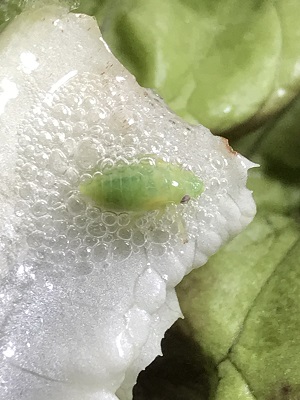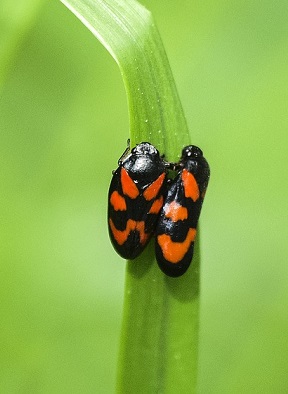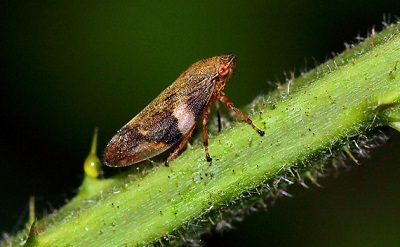Act!
Inspiration · ResourcesHopping mad this Spring!
Find Froghoppers, spot Spittlebugs and look for Leafhoppers ...
If you were asked what, to you, most signified the arrival of Spring, you may talk whistfully of the return of swifts, the call of the cuckoo, woodland carpets of bluebells and ponds full of frogspawn, but I'm sure not many of you would mention the white blobs of froth coating the stems, leaves and flower buds of so many different plants. However we've all been asked to keep our eyes open, in order to take part in an important survey.
Known as 'cuckoo spit' - these moist balls of bubbles are protecting Spittlebugs (the young nymphs of yellow-green froghoppers) from extremes of temperature, dehydration and predators. Spittlebug eggs are laid in late summer but the eggs hatch in early spring, when they attach themselves to a plant and begin feeding. They go through 5 stages before emerging as adults (usually in June), when they leave their spittle nests behind and become free-flying. Apparently, Spittlebugs can jump 100 times their own length and some species of adult Froghoppers can jump up to 70cm vertically! According to Alan Stewart, the Sussex Recorder of Leafhoppers and Planthoppers, out of the 10 species of Froghopper that are resident in Britain, the so-called 'Meadow Spittlebug' is one of the most common and seems to have the broadest diet of any insect, being known to feed on more than 400 species of plant.

The reason we've been asked to participate in this survey, is because Froghoppers are one of the insect species that feed on the xylem of plants (the tissue that transports water from the roots to the leaves) and therefore they could unwittingly transmit a bacterium called Xyella Fastidiosa should it arrive in the UK. In Southern Italy this bacterium was responsible for the death of millions of Olive trees and it has been known to infect more than 300 types of trees, shrubs and herbaceous plants. Just in case the disease is accidentally introduced to Britain through imported plants (for example lavender, rosemary and olive trees) DEFRA and the Biotechnology and Biological Sciences Research Council (BBSRC) are funding a BRIGIT project survey to better understand how the disease would spread.
They need our help in order to map the geographical distribution of the different species of Spittlebug and record the plant species on which it's feeding. So please get involved and keep your eyes peeled this spring! For more information and an on-line form for submitting your sightings please click this link.

